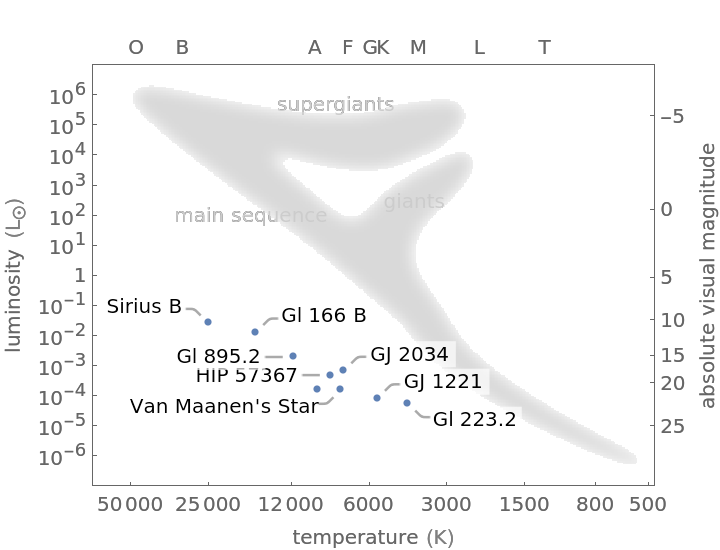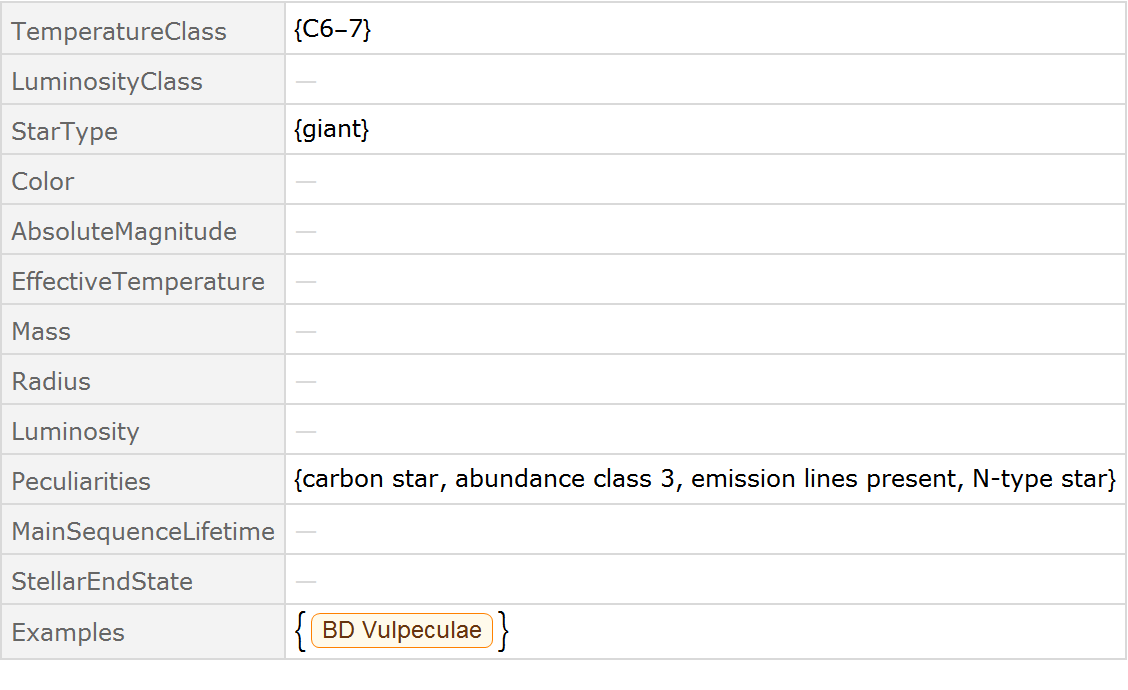Details
ResourceFunction["StellarSpectralClassData"][sc] is equivalent to ResourceFunction["StellarSpectralClassData"][sc,"PropertyAssociation"].
ResourceFunction["StellarSpectralClassData"]["Properties"] gives a list of the available properties.
Spectral class specification follows a nonstandardized set of patterns, so not all patterns can be detected.
Standard temperature classes typically begin with "O", "B", "A", "F", "G", "K" or "M" followed by a digit, or sometimes two digits separated by a decimal point.
Spectral classes containing "L", "T", "Y" and some late (less luminous) "M" are more typical of brown dwarf stars.
Temperature classes containing "C", "S" or "R" typically indicate carbon abundance peculiarities.
Luminosity classes are typically represented using Roman numerals between "I" and "VII", with "I" representing supergiants and "VII" representing white dwarfs. Supergiant luminosity classes can be subdivided into subclasses "Ia", "Iab" and "Ib", from most luminous to least luminous, respectively.
Various less commonly used notations such as "d", "sd" and "ms" may be used to represent specific luminosity classes.
Wolf–Rayet stars may be indicated using class notations containing "W" followed by "C", "N" or "O" denoting a subclass.
White dwarf stars are often denoted using "D" followed by "A", "B", "C", "O", "Q" or "Z" denoting a subclass.
The special symbol "+" may represent a composite spectrum or a spectral peculiarity, while "/" indicates uncertainty or variability and may make it difficult to derive well-defined parameters.
Many different spectral peculiarities can be denoted by a large and nonstandard set of notations, only some of which are supported.
Derived properties are based on the interpolation of values from known stars or a stellar model. Derived values may deviate from observed values, especially for peculiar stars or stars in transitional or variable states.
Properties that can be derived from the spectral class include:
| "AbsoluteMagnitude" | absolute magnitude |
| "Color" | color |
| "EffectiveTemperature" | effective temperature |
| "Examples" | list of example stars |
| "Luminosity" | luminosity |
| "LuminosityClass" | luminosity class |
| "MainSequenceLifetime" | lifetime on the main sequence |
| "Mass" | mass |
| "Peculiarities" | spectral peculiarities |
| "Radius" | radius |
| "StarType" | star type |
| "StellarEndState" | stellar end state |
| "TemperatureClass" | temperature class |

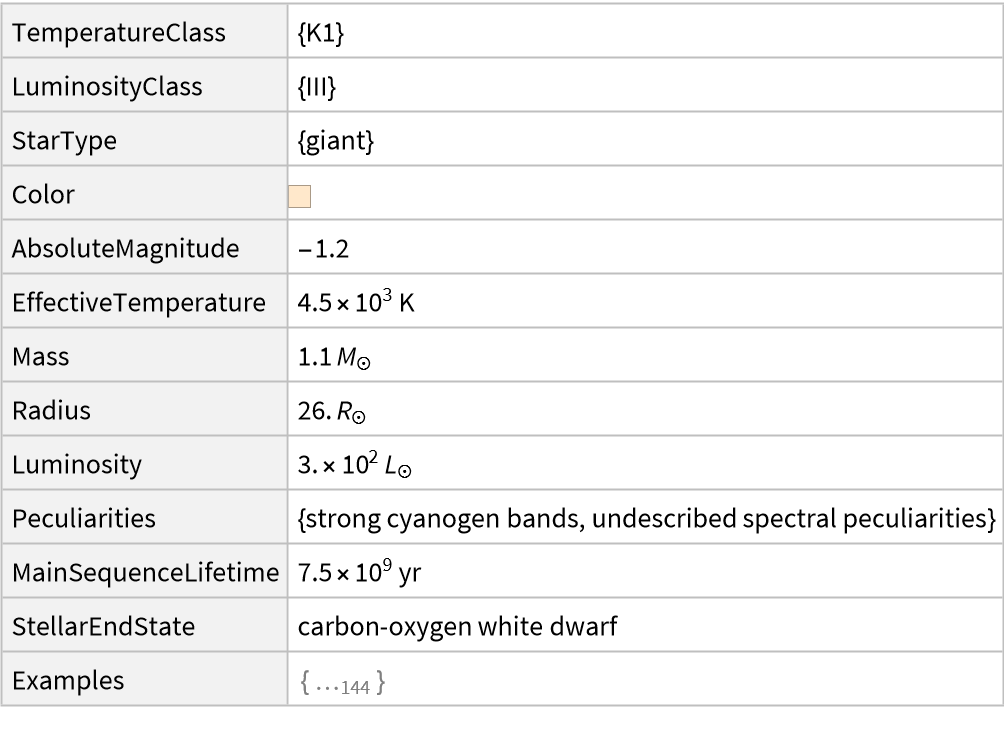
![ListPlot[
ResourceFunction[
"StellarSpectralClassData"][{"O9V", "B5Ia", "A7V", "F8V", "G2V", "K6IV", "M4III", "L5V", "T5V", "Y5V"}, "EffectiveTemperature"]]](https://www.wolframcloud.com/obj/resourcesystem/images/ed1/ed1429cf-ce53-4dce-be51-7d9fae65ca4a/0e18397d51c283d2.png)
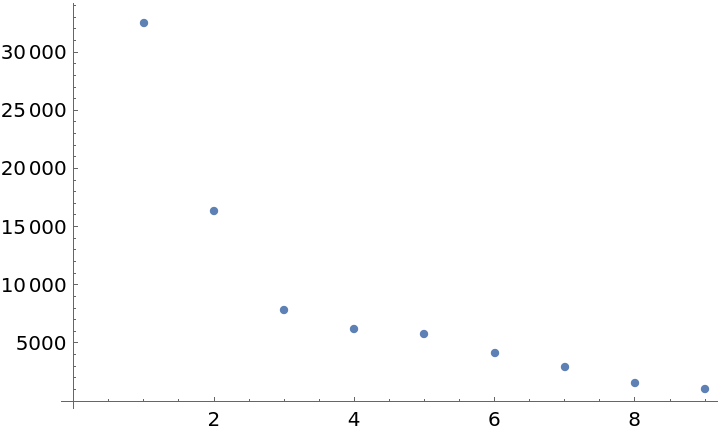

![ListLogPlot[
ResourceFunction[
"StellarSpectralClassData"][{"A2VII", "A2VI", "A2V", "A2IV", "A2III", "A2II", "A2Ib", "A2Iab", "A2Ia"}, "Luminosity"]]](https://www.wolframcloud.com/obj/resourcesystem/images/ed1/ed1429cf-ce53-4dce-be51-7d9fae65ca4a/67407996b34827e3.png)
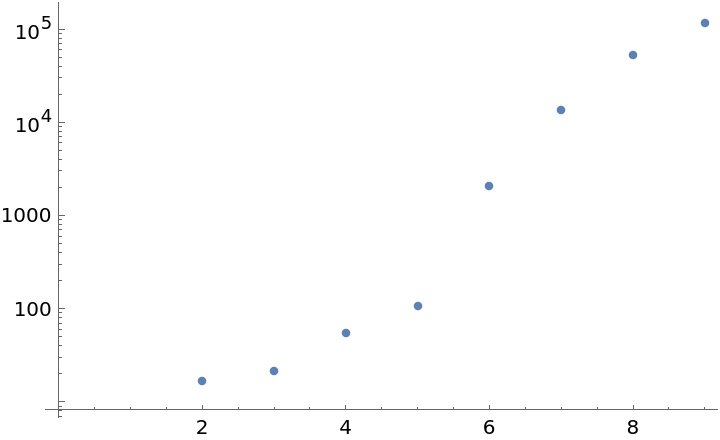

![Flatten[ResourceFunction[
"StellarSpectralClassData"][{"A2VII", "A2VI", "A2V", "A2IV", "A2III", "A2II", "A2Ib", "A2Iab", "A2Ia"}, "StarType"]]](https://www.wolframcloud.com/obj/resourcesystem/images/ed1/ed1429cf-ce53-4dce-be51-7d9fae65ca4a/2ae426248cab1036.png)
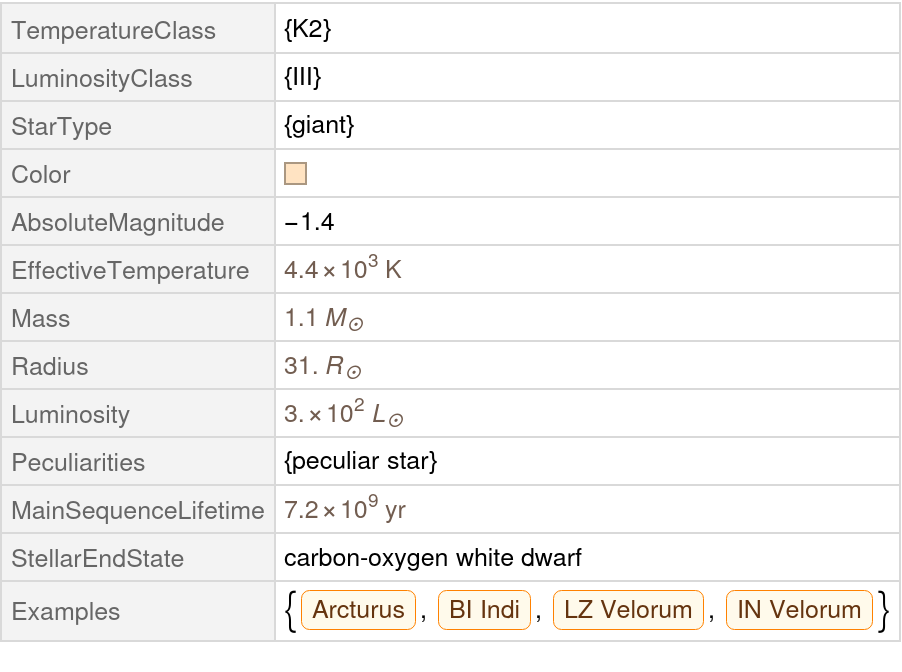
![ResourceFunction["HertzsprungRussellDiagram"][
First[ResourceFunction["StellarSpectralClassData"]["K1IIICN...", "Examples"]]]](https://www.wolframcloud.com/obj/resourcesystem/images/ed1/ed1429cf-ce53-4dce-be51-7d9fae65ca4a/65ad4b8636288ab7.png)

![ResourceFunction["HertzsprungRussellDiagram"][
First[ResourceFunction["StellarSpectralClassData"][#, "Examples"]] & /@ {"T8.5", "M5V", "K5V", "G5V", "F5V", "A5V", "B5V", "O9V"}]](https://www.wolframcloud.com/obj/resourcesystem/images/ed1/ed1429cf-ce53-4dce-be51-7d9fae65ca4a/04df8f01148c2782.png)
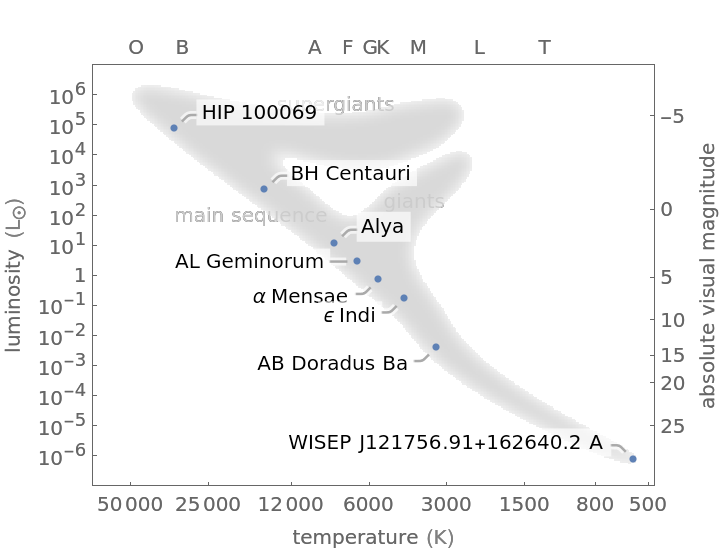
![ResourceFunction["HertzsprungRussellDiagram"][
First[ResourceFunction["StellarSpectralClassData"][#, "Examples"]] & /@ Union[EntityValue[EntityClass["Star", "WhiteDwarfStar"], "SpectralClass"]]]](https://www.wolframcloud.com/obj/resourcesystem/images/ed1/ed1429cf-ce53-4dce-be51-7d9fae65ca4a/69819a8584930d5e.png)
